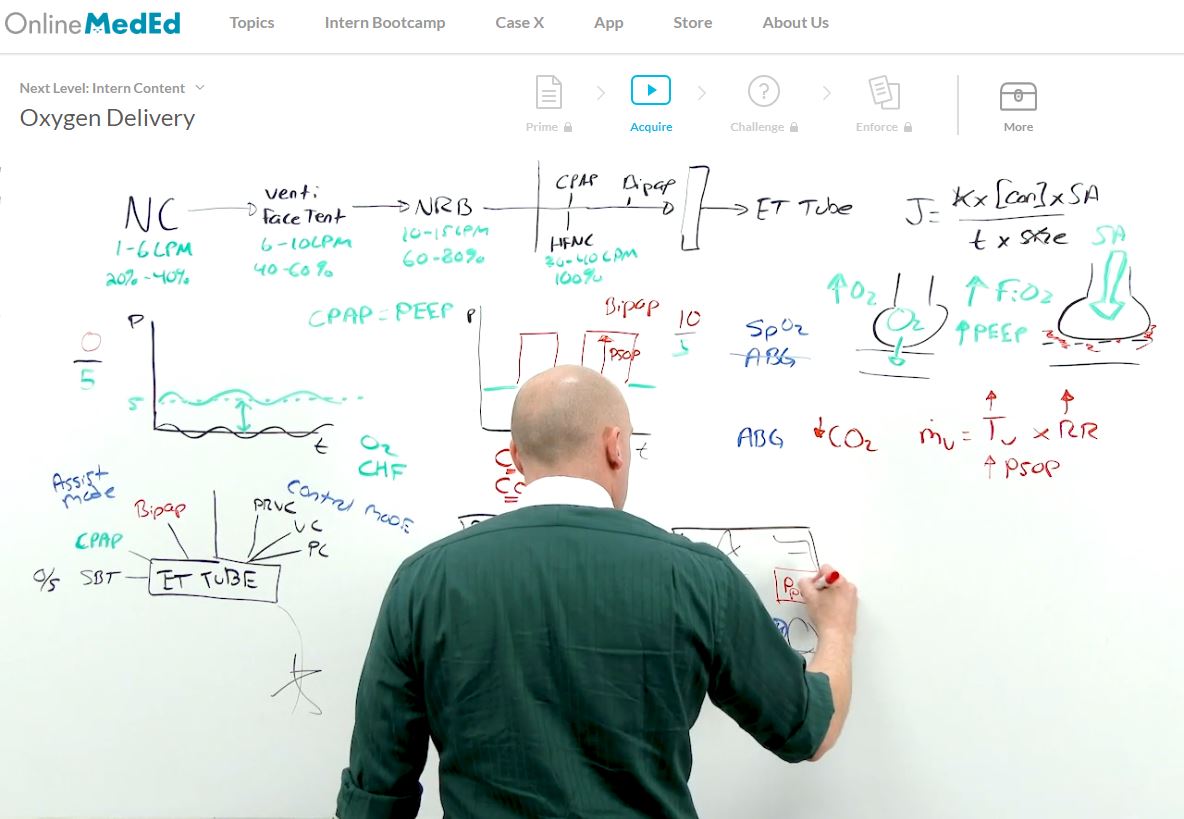Alex and I are big fans of Dr. Dustyn Williams at OnlineMedEd. His website is a fantastic free tool for medical students and residents. The videos aren’t just clear and high-yield, but are actually presented in a way that enhances recall. Even if you’re not in the medical field, his technique is worth considering, especially for teachers. Here’s an example (watch the full video here):
Usually, content like this is presented in a powerpoint or written by a faceless presenter on a blank screen. The powerpoint decks are full of identical slides, bullet points and simple layouts. For handwritten lectures recorded for Youtube, the presenter will generally erase or reposition the camera to a blank spot. Each piece of information is presented in the center of the screen and independent of the information presented before and after it.
Dr. Williams, on the other hand, does not erase the white board to start over. Instead he distributes the information across the restrictions of one plane and allows you to see how it builds over that space. While the traditional method may make it easier for learners to read the information, it really doesn’t take advantage of our spatial memory, which is one of our most powerful tools in the early stages of acquiring knowledge.
You might have felt the power of spatial memory when you’re taking a test and trying to remember a piece of information. You’ve likely closed your eyes and visualized its location on the page, in an effort to recall the content. OnlineMedEd harnesses that instinct by organizing their lectures across the white board and in doing so, creates lots of pockets of loci and cues to help immediately strengthen your recall of the information, especially in the early stages of learning. When I watch the videos, I’ll follow along by writing down exactly what he has written on the whiteboard, in the same layout. I’ll include my own drawings or rearrange the information based on my familiarity and comfort with the topic at hand.
Of course, active recall is the next step, so I’ll create Anki cards based on my notes and challenge myself to recreate each lesson from memory. I try to include a scan of my notes on the back of the card so that I can glance at the layout and get a sense of everything else I should know in that lesson. This method works well when I’m not making a memory palace for everything.
How do you lay out your notes? Have you tried teaching from a white board, and what was the feedback you received from students?

